Junjie He
VPGS-SLAM: Voxel-based Progressive 3D Gaussian SLAM in Large-Scale Scenes
May 25, 2025



Abstract:3D Gaussian Splatting has recently shown promising results in dense visual SLAM. However, existing 3DGS-based SLAM methods are all constrained to small-room scenarios and struggle with memory explosion in large-scale scenes and long sequences. To this end, we propose VPGS-SLAM, the first 3DGS-based large-scale RGBD SLAM framework for both indoor and outdoor scenarios. We design a novel voxel-based progressive 3D Gaussian mapping method with multiple submaps for compact and accurate scene representation in large-scale and long-sequence scenes. This allows us to scale up to arbitrary scenes and improves robustness (even under pose drifts). In addition, we propose a 2D-3D fusion camera tracking method to achieve robust and accurate camera tracking in both indoor and outdoor large-scale scenes. Furthermore, we design a 2D-3D Gaussian loop closure method to eliminate pose drift. We further propose a submap fusion method with online distillation to achieve global consistency in large-scale scenes when detecting a loop. Experiments on various indoor and outdoor datasets demonstrate the superiority and generalizability of the proposed framework. The code will be open source on https://github.com/dtc111111/vpgs-slam.
Sensing-Assisted Channel Prediction in Complex Wireless Environments: An LLM-Based Approach
May 14, 2025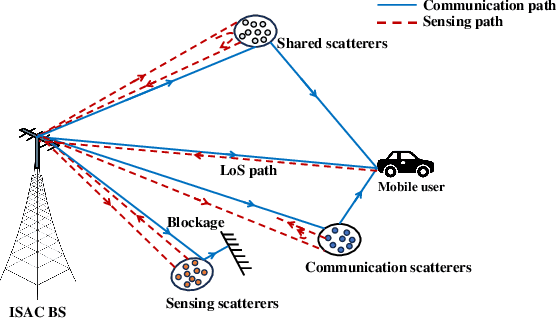
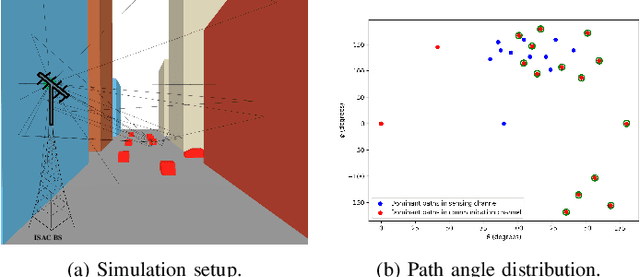

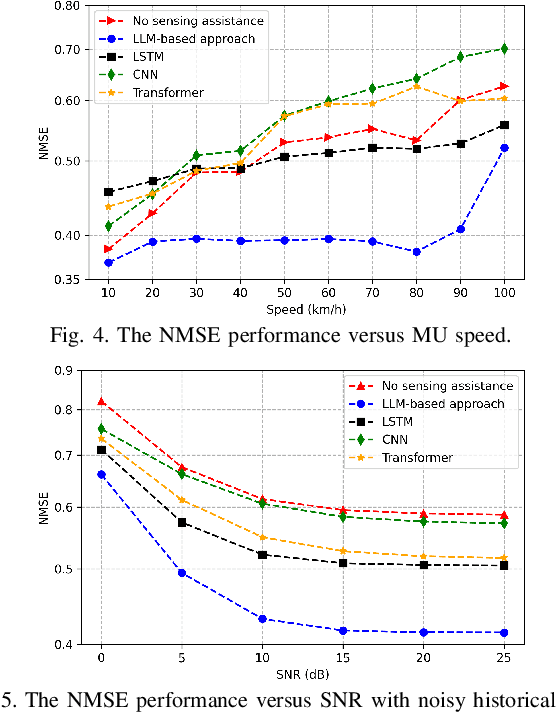
Abstract:This letter studies the sensing-assisted channel prediction for a multi-antenna orthogonal frequency division multiplexing (OFDM) system operating in realistic and complex wireless environments. In this system,an integrated sensing and communication (ISAC) transmitter leverages the mono-static sensing capability to facilitate the prediction of its bi-static communication channel, by exploiting the fact that the sensing and communication channels share the same physical environment involving shared scatterers. Specifically, we propose a novel large language model (LLM)-based channel prediction approach,which adapts pre-trained text-based LLM to handle the complex-matrix-form channel state information (CSI) data. This approach utilizes the LLM's strong ability to capture the intricate spatiotemporal relationships between the multi-path sensing and communication channels, and thus efficiently predicts upcoming communication CSI based on historical communication and sensing CSI data. Experimental results show that the proposed LLM-based approach significantly outperforms conventional deep learning-based methods and the benchmark scheme without sensing assistance.
AnyStory: Towards Unified Single and Multiple Subject Personalization in Text-to-Image Generation
Jan 16, 2025Abstract:Recently, large-scale generative models have demonstrated outstanding text-to-image generation capabilities. However, generating high-fidelity personalized images with specific subjects still presents challenges, especially in cases involving multiple subjects. In this paper, we propose AnyStory, a unified approach for personalized subject generation. AnyStory not only achieves high-fidelity personalization for single subjects, but also for multiple subjects, without sacrificing subject fidelity. Specifically, AnyStory models the subject personalization problem in an "encode-then-route" manner. In the encoding step, AnyStory utilizes a universal and powerful image encoder, i.e., ReferenceNet, in conjunction with CLIP vision encoder to achieve high-fidelity encoding of subject features. In the routing step, AnyStory utilizes a decoupled instance-aware subject router to accurately perceive and predict the potential location of the corresponding subject in the latent space, and guide the injection of subject conditions. Detailed experimental results demonstrate the excellent performance of our method in retaining subject details, aligning text descriptions, and personalizing for multiple subjects. The project page is at https://aigcdesigngroup.github.io/AnyStory/ .
UniPortrait: A Unified Framework for Identity-Preserving Single- and Multi-Human Image Personalization
Aug 12, 2024



Abstract:This paper presents UniPortrait, an innovative human image personalization framework that unifies single- and multi-ID customization with high face fidelity, extensive facial editability, free-form input description, and diverse layout generation. UniPortrait consists of only two plug-and-play modules: an ID embedding module and an ID routing module. The ID embedding module extracts versatile editable facial features with a decoupling strategy for each ID and embeds them into the context space of diffusion models. The ID routing module then combines and distributes these embeddings adaptively to their respective regions within the synthesized image, achieving the customization of single and multiple IDs. With a carefully designed two-stage training scheme, UniPortrait achieves superior performance in both single- and multi-ID customization. Quantitative and qualitative experiments demonstrate the advantages of our method over existing approaches as well as its good scalability, e.g., the universal compatibility with existing generative control tools. The project page is at https://aigcdesigngroup.github.io/UniPortrait-Page/ .
LIV-GaussMap: LiDAR-Inertial-Visual Fusion for Real-time 3D Radiance Field Map Rendering
Jan 26, 2024



Abstract:We introduce an integrated precise LiDAR, Inertial, and Visual (LIV) multi-modal sensor fused mapping system that builds on the differentiable surface splatting to improve the mapping fidelity, quality, and structural accuracy. Notably, this is also a novel form of tightly coupled map for LiDAR-visual-inertial sensor fusion. This system leverages the complementary characteristics of LiDAR and visual data to capture the geometric structures of large-scale 3D scenes and restore their visual surface information with high fidelity. The initial poses for surface Gaussian scenes are obtained using a LiDAR-inertial system with size-adaptive voxels. Then, we optimized and refined the Gaussians by visual-derived photometric gradients to optimize the quality and density of LiDAR measurements. Our method is compatible with various types of LiDAR, including solid-state and mechanical LiDAR, supporting both repetitive and non-repetitive scanning modes. bolstering structure construction through LiDAR and facilitating real-time generation of photorealistic renderings across diverse LIV datasets. It showcases notable resilience and versatility in generating real-time photorealistic scenes potentially for digital twins and virtual reality while also holding potential applicability in real-time SLAM and robotics domains. We release our software and hardware and self-collected datasets on Github\footnote[3]{https://github.com/sheng00125/LIV-GaussMap} to benefit the community.
FastInst: A Simple Query-Based Model for Real-Time Instance Segmentation
Apr 01, 2023



Abstract:Recent attention in instance segmentation has focused on query-based models. Despite being non-maximum suppression (NMS)-free and end-to-end, the superiority of these models on high-accuracy real-time benchmarks has not been well demonstrated. In this paper, we show the strong potential of query-based models on efficient instance segmentation algorithm designs. We present FastInst, a simple, effective query-based framework for real-time instance segmentation. FastInst can execute at a real-time speed (i.e., 32.5 FPS) while yielding an AP of more than 40 (i.e., 40.5 AP) on COCO test-dev without bells and whistles. Specifically, FastInst follows the meta-architecture of recently introduced Mask2Former. Its key designs include instance activation-guided queries, dual-path update strategy, and ground truth mask-guided learning, which enable us to use lighter pixel decoders, fewer Transformer decoder layers, while achieving better performance. The experiments show that FastInst outperforms most state-of-the-art real-time counterparts, including strong fully convolutional baselines, in both speed and accuracy. Code can be found at https://github.com/junjiehe96/FastInst .
Deep neural network based adaptive learning for switched systems
Jul 11, 2022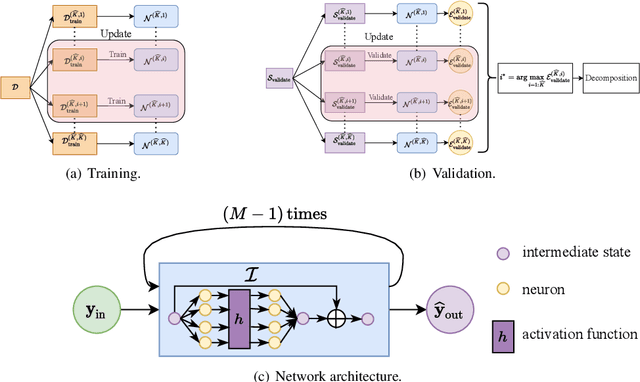

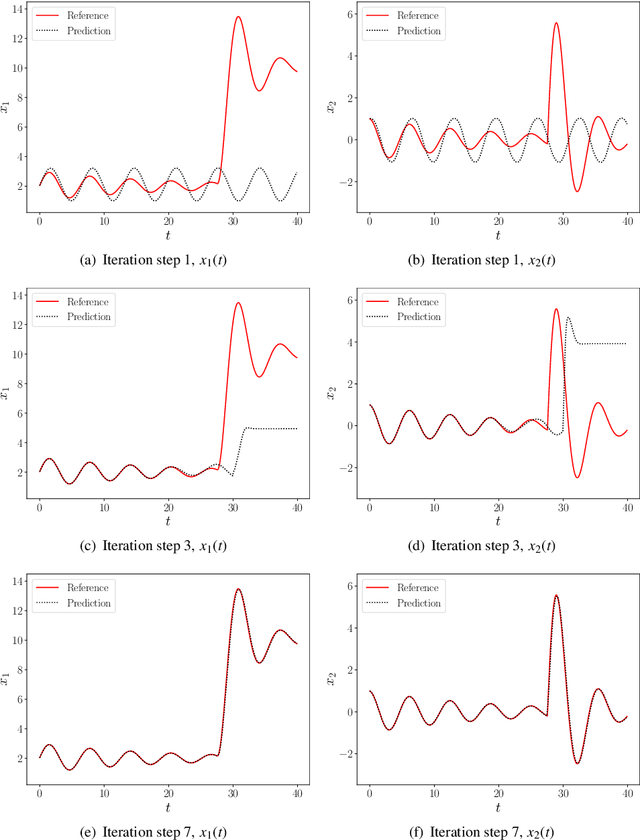
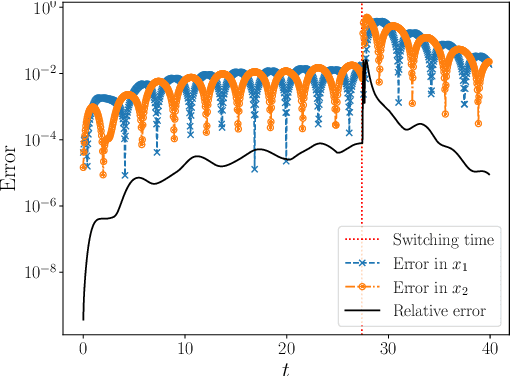
Abstract:In this paper, we present a deep neural network based adaptive learning (DNN-AL) approach for switched systems. Currently, deep neural network based methods are actively developed for learning governing equations in unknown dynamic systems, but their efficiency can degenerate for switching systems, where structural changes exist at discrete time instants. In this new DNN-AL strategy, observed datasets are adaptively decomposed into subsets, such that no structural changes within each subset. During the adaptive procedures, DNNs are hierarchically constructed, and unknown switching time instants are gradually identified. Especially, network parameters at previous iteration steps are reused to initialize networks for the later iteration steps, which gives efficient training procedures for the DNNs. For the DNNs obtained through our DNN-AL, bounds of the prediction error are established. Numerical studies are conducted to demonstrate the efficiency of DNN-AL.
 Add to Chrome
Add to Chrome Add to Firefox
Add to Firefox Add to Edge
Add to Edge